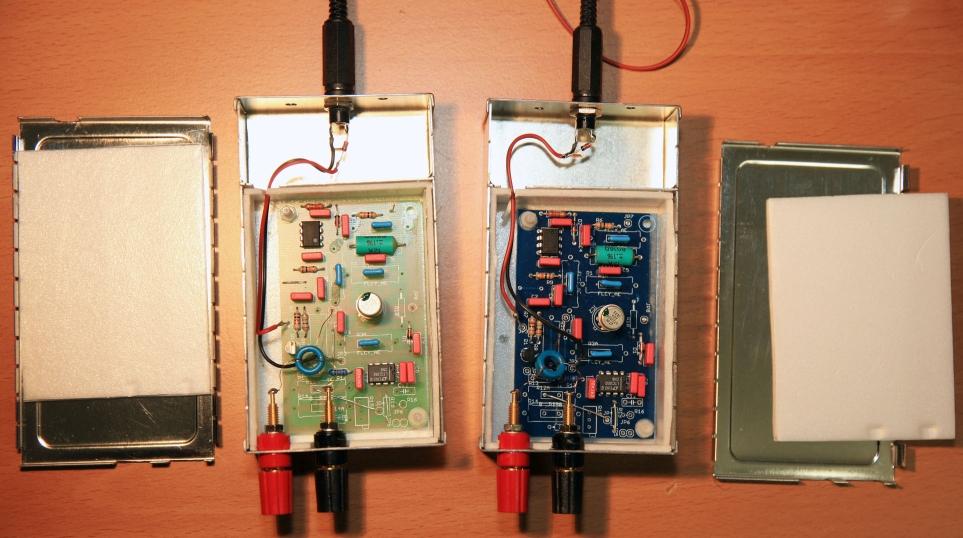Hello,
maybe you remember my LTZ 1000 tuner box assemblies.

Inside the tuner box, there's space for a simple linear regulator, like an LM317 based one.
Those boxes were all powered by transformer wall warts, which I salvaged from different devices. I use a 2.8VA, 15V, 180mA transformer as a replacement for the original ones, plus bridge rectifier and electrolytic capacitor for an unregulated DC output. Here's an old transformer case from Nokia.

It was always my intention to have a proper mechanical assembly for these tuner boxes, inside an outer case.
At first, here's the LTZ #5, solution copyright by Andreas, battery powered, where I added CuTe Pomona jacks for output, Guard (connected to isolated tuner box) and case ground.

Those Pomona jacks are long enough to mechanically connect outer case and the tuner box, adding an isolating plastic plate, and plastic spacers, so that outer box and tuner boxes are electrically isolated from each other, and also avoiding long connection cables.

On the rear side, the tuner boxes are screwed on to another plastic plate, using an electrical connection to the tuner boxes, serving as a common Guard.

Then I added the Guard and Case Ground jacks, a simple 12V LM317 stabilizer, and connected all 4 modules in parallel.

I would have of course preferred 4 isolated supplies.
This way, the 4 reference grounds differ by 50.. 250µV, because of differences on the supply cables, due to different oven supply currents. It's also not possible to connect any of these 4 reference grounds together (to make differential measurements), as this directly shifts the references outputs.
That's ok for me at the moment, as I regularly compare all of my 12 voltage references against each other, by absolute measurements of each by means of my 3458A.
Maybe somebody has an idea, to commonly supply several LTZs and properly interface the reference grounds. I currently have no idea, how this is done inside the Datron 4910.
Here's my Tower of References, where I maintain Volt and Ohm.

Frank